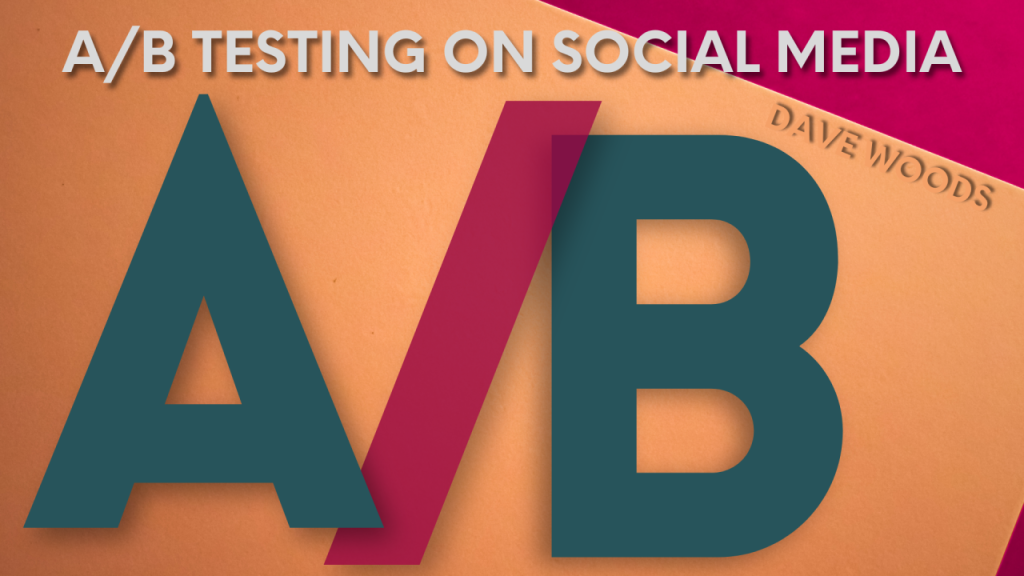In the ever-evolving world of social media, businesses are constantly seeking ways to enhance their engagement metrics and improve their return on investment (ROI). One of the most effective strategies to achieve this is through A/B testing, a method that allows marketers to compare two versions of a piece of content to determine which one performs better.
By systematically analyzing how various changes can influence user behavior, businesses can make informed decisions that lead to higher engagement rates and better financial returns.
A/B testing, also known as split testing, involves presenting two variations of a social media post to different segments of your audience. Whether it’s a change in wording, imagery, call-to-action buttons, or the time of posting, every tiny adjustment can lead to drastically different results. This data-driven approach helps to eliminate guesswork from social media marketing, allowing companies to refine their strategies based on actual user responses rather than assumptions.
Moreover, the significance of A/B testing extends beyond mere engagement. It is a gateway to understanding your audience’s preferences and behaviors more deeply. By continuously testing and learning from your audience’s reactions, you create a more tailored marketing strategy that resonates with them, fostering loyalty and long-term relationships. Every test provides valuable insights that can feed into your overall marketing strategy, thereby improving your position in a competitive landscape.
As organizations embark on or refine their social media strategies, integrating A/B testing can prove to be a game-changer. It not only empowers marketers to make smarter choices but also optimizes content to deliver the maximum impact. This article will delve into the vital aspects of A/B testing in social media, outlining how to implement it, best practices, and the potential benefits for your business.
Join us as we explore the intricacies of A/B testing for social media and unveil tactics to increase user engagement while maximizing ROI. Whether you are a seasoned marketer or a newbie, understanding these principles will enable you to leverage this powerful tool effectively and drive your campaigns toward success.
Understanding A/B Testing
A/B testing, at its core, is a strategic approach that compares two or more variations of content to measure performance. By presenting different versions to separate segments of your audience, marketers can observe how changes affect user engagement, click-through rates, and ultimately conversions. This methodology is rooted in hypothesis-driven experimentation, allowing businesses to test assumptions based on data rather than intuition alone.
In the realm of social media, A/B testing is particularly effective due to the vast array of variables that can be altered. Be it the image chosen for a post, the copy used in the caption, or even the timing of the post, each factor can significantly influence user interaction. For instance, an image of a product showcased in a lifestyle context might perform better than a standard product shot. By testing these variations, marketers can identify which elements resonate more with their audience.

The process typically involves defining your goal, such as increasing link clicks, maximizing likes, or enhancing overall shares. Once the goals are clear, marketers can create two distinct versions to test and distribute them to a relevant audience segment—often referred to as the control group (version A) and the test group (version B). Analytic tools then provide data on how each version performed regarding the defined goals.
Successful A/B testing is often iterative, requiring businesses to refine hypotheses and continuously adapt strategies. The insights garnered from these experiments contribute to an evolving understanding of what works and what doesn’t within your specific market segment. Over time, this data-driven method leads to more informed, effective marketing practices that can drive meaningful results across various platforms.
Choosing What to Test
When it comes to A/B testing in social media, the key lies in choosing the right variables to test. Your choices should stem from your overarching marketing objectives and the insights you hope to glean about your audience. Typical areas for testing include visual elements, copy variations, and calls to action.
Visual elements can include anything from color schemes to image selection, and changing these factors can have a pronounced effect on user engagement. For example, testing a bright, vibrant image versus a more subdued one can reveal preferences in aesthetics that are crucial for your brand identity. Consider also the format of the posts; testing a video versus an infographic could yield insights into viewer preferences that impact future content direction.
The text accompanying your visuals is equally important. This encompasses headlines, body text, hashtags, and calls to action. A powerful call to action can command user engagement, so variations should be tested to discover what phrases or actions resonate best. For instance, comparing “Shop Now” with “Discover More” could reveal how language influences user behavior.
Finally, timing and scheduling are crucial factors that can dramatically affect post performance. Testing different posting times and days of the week will provide insights into when your audience is most active. While general best practices exist, specific audiences will exhibit unique patterns, and understanding these nuances can significantly enhance engagement.
Implementing A/B Testing in Your Strategy
To successfully implement A/B testing in your social media strategy, start by integrating it into your content calendar. Create a structured approach where A/B testing becomes a regular part of your content creation and distribution process. This ensures that your campaigns remain data-driven and responsive to audience preferences.
Begin with a comprehensive understanding of your audience. Utilize analytics tools to gather data about their behavior, preferences, and demographics. This information will guide your hypothesis formulation and testing decisions. Once you have a clear audience profile, identify the specific elements you want to test and create compelling variations to evaluate.
Next, establish a testing framework. Set clear objectives for each test. For each variable tested, determine the metrics you will use to measure success. Click-through rates, engagement levels, and conversion rates are reliable metrics that can provide valuable insights. Choose a sufficient sample size to ensure that your results are statistically significant.
After deploying your tests, be patient. It is essential to run tests long enough to gather sufficient data, avoiding premature conclusions. Once the data is accumulated, analyze the results with a critical eye. Look for meaningful trends and patterns that can inform your future content strategy. Document findings and adjustments for ongoing reference and continuous learning.
Analyzing Results and Making Informed Decisions
Analyzing the results of your A/B tests is where the magic happens. The key to effective testing is not just in the execution but also in understanding and interpreting the data collected. Once the test concludes, it is essential to assess which variation performed better based on the metrics set before the test.
For instance, if one version of a post led to significantly higher engagement rates, it’s important to dig deeper into why that might be the case. Did the visual resonate more with the audience? Was the copy more compelling? Understanding the “why” behind successful elements can guide future content creation, leading to an operationally efficient marketing strategy.
Furthermore, it’s crucial to communicate your findings with your broader team. Sharing insights and results can lead to collaborative discussions and ideas. Engaging the team in the analytics process can also build a culture of data-driven decision-making and fosters an environment that values continuous improvement.
Additionally, use the results to refine your broader marketing strategies. A/B testing should influence your content strategy, social media tactics, and even your product offerings. Insights gained through testing can directly impact how you communicate with your audience and shape your brand identity. As you continue to experiment and analyze, you’ll develop a keen understanding of your target market and optimize your efforts accordingly.
Conclusion
In the realm of digital marketing, A/B testing on social media emerges as a vital technique for enhancing engagement and maximizing ROI. This strategic approach empowers brands to break down the complex dynamics of audience interaction and provides data-driven insights that inform creative decisions. As the competition intensifies in the digital landscape, leveraging A/B testing becomes not just useful but imperative for businesses that aim to distinguish themselves.
By implementing a systematic approach to A/B testing, organizations can make informed decisions that customize their content to meet audience preferences. From visuals to copywriting and timing, the ability to experiment and analyze outcomes ensures businesses create impactful content that resonates with their target market. Moreover, A/B testing introduces an iterative cycle of testing and refinement that continuously evolves social media strategies in tune with audience behavior.
The insights derived from A/B testing extend beyond immediate content refinement. Each experiment serves as a learning opportunity that enriches the overall marketing strategy. As organizations gather more data on user preferences and behaviors, they cultivate a deeper understanding of their audience, fostering long-term customer relationships that translate into loyalty and increased revenue.
As the digital landscape progresses, the need for agility in marketing tactics, particularly in social media, has never been more important. Organizations that prioritize experimentation and embrace A/B testing are not only better positioned to adapt to changing trends but are also tenacious in their efforts to boost engagement and ROI. This proactive approach to understanding what connects with audiences leads to more effective and informed marketing strategies, allowing brands to thrive in an increasingly crowded market.
In conclusion, A/B testing is not merely a tactical tool; it is a cornerstone of successful social media marketing that elevates brand engagement and drives financial success. By recognizing the power of data-driven decision-making, companies can optimize their social media presence, yield higher returns, and ultimately cultivate an engaged and loyal customer base. Whether you are revising your content strategy, exploring new campaign avenues, or striving to connect more effectively with your audience, A/B testing offers the roadmap to success in an ever-changing digital environment. Harnessing its full potential will undoubtedly position your brand at greater heights.
